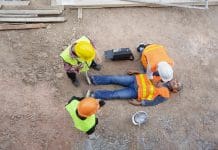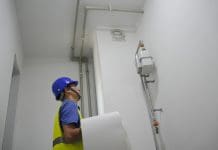Applicable across a wide variety of disciplines, Behavioural Safety is a proven process for reducing injuries and incidents by eliminating unsafe behaviours in the workplace. It is known to produce many business benefits that include fewer incidents, improved communications, reduced bottlenecks and lower operating costs.
Case Study One
A large upstream Oil & Gas company in the Middle East was concerned to improve its incident rates to become the safest facility of its type in the world. Analyses of previous incidents had shown that many personal injuries were occurring as a result of people’s unsafe behaviours. The company engaged BSMS to assist address these.
Implementation
BSMS began implementing the Behavioural Safety process on the existing operating plant (OpCo) with a series of focus group exercises and briefings with the workforce. A project coordinator was trained, plant specific safety checklists were developed, and observers trained from resident contractors and plant personnel. Safety leadership checklists were also developed for each layer of management. The project went live on a three-week overhaul on Trains 1 and 2 in March, where no injuries occurred at all. The process was then started on the plant, with checklists and observers changed every 4-5 months.
In the following three years, incident rates tumbled from an already low starting point; In the first year, the average Total Recordable Incident Rate (TRIR) decreased by 35%, followed by a further 21% decrease in year 2, and 58% in year 3. The Lost time Incident Rate (LTIR) also tumbled by 62%, 23% and 45% respectively in the following two years (Exhibit 1).

Case Study Two
Once the process had started in the operating plant, attentions were turned to implementing the process on a construction project. The Behavioural Safety process was adapted and applied to the construction of two ‘mega-LNG trains’, a worker camp for 50,000 people, LNG storage tanks, jetties, and offshore pipelines.
Adaptation to Construction
A project coordinator and champion from the main contractor, and four sub-contractors were trained. Each developed job specific checklists for their respective work activities; managers also developed safety leadership checklists. Further project coordinators were trained throughout the year. During this time, manpower was ramping up at a phenomenal rate from a base of 25,000 workers, to a peak of 47,000 (up to 1000 people/week) to meet the tight production schedule.
The project coordinators briefed everyone on site about the process as they arrived, and asked for volunteer observers, as the project needed 2% of the workforce trained as observers to give a 1:50 ratio of observers to workers. These observers and many site safety officers were trained to observe, and provide verbal feedback and coaching at one-day sessions.
Verbal feedback was provided at the point of observation, and tabulated feedback sheets were discussed at ‘toolbox’ talks, conducted either daily or weekly. Monthly feedback sessions were held with the various contractors to pass on innovations, and discuss any problems.
In addition, various process metrics were monitored for all the sub-contractors to keep the project on track. This included the numbers of personnel working on site, the ratio of observers to site personnel, the number of completed observations turned-in, the corrective action completion rate, the percent safe score, the percent safe leadership score, and the Visible Ongoing Support (VOS) score.

Results
Over the following 25 months, with 239m man-hours worked, 2.4m safety observations conducted, 321,000 safety leadership behaviours recorded, 121,000 VOS sheets completed, and over 3900 corrective actions dealt with, the combined levels of safety behaviour improved from an average of 76% safe at the project start to 96% safe (Exhibit 2).
Despite the massive increase of personnel arriving on site, the LTIR consistently fell each year, by 20%, 25% and 67% respectively (Exhibit 3). There was an increase in recordable first-aid incidents in year 1, when manpower levels substantially increased; however, incident rates dropped back significantly in year 2. The longest run without a Lost-Time injury was 121 million man hours worked.

In recent years, the company has consistently been recognised by the Oil & Gas Producers Association (OGP) in London, and Shell Global Solutions (SGS), as the safest upstream Oil & Gas Company in the world. Such results provide independent validation of the Behavioural Safety approach to improve an organisations safety culture.
If you want to achieve improvements in your safety performance, contact BSMS: info@bsms-inc.com














